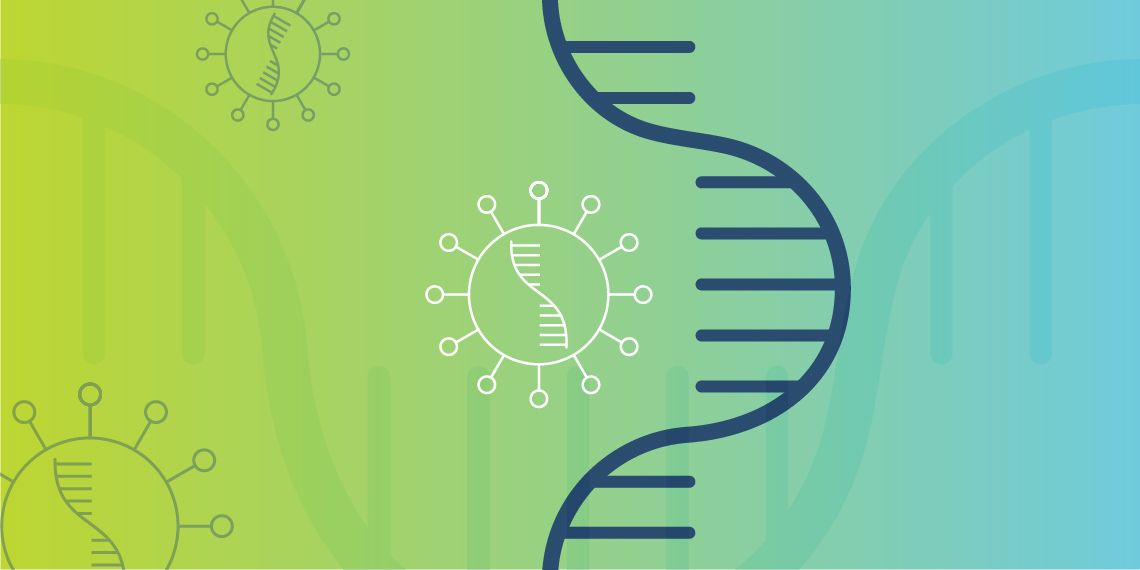The COVID-19 pandemic has captured the attention of the world and won’t let go. And that has sparked efforts for creative solutions in some surprising places. Wastewater is not where most peoples’ minds go first when they think of air-borne diseases. But in fact, wastewater-based epidemiology holds much promise for tracing and predicting SARS-CoV-2 outbreaks, and therefore for getting ahead of them.
In our recent webinar, Aaron Bivins, PhD, of the University of Notre Dame and Raul Gonzalez of the Hampton Roads Sanitation District discussed how wastewater-based epidemiology (WBE) can be used to monitor community COVID-19 infections, including presymptomatic and asymptomatic cases (360Dx Staff, 2020). They are among a growing group of scientists and public health officials around the world embracing this approach to help prepare and prioritize resources (Bogler et al. 2020). The technology at the core of their approach, Droplet Digital PCR (ddPCR), is sensitive enough to detect changes in community infection rates despite the abundant presence of PCR inhibitors in wastewater samples. Here we cover several points of discussion raised during the Q&A portion of the webinar that highlight how this technique can be carried out to effectively monitor community outbreaks of COVID‑19.
What Viewers Wanted to Know…
Q. How is WBE helping guide our response to the COVID-19 pandemic?Depending on the sampling method and ddPCR test used, wastewater testing can detect as few as one COVID-19 infection in 1,000–10,000 people. This makes it an attractive option for monitoring municipal regions, universities, airports, and a range of other public locations. When wastewater testing identifies an uptick in SARS-CoV-2 levels within a population, individual testing can be used to identify who is infected and what measures can be taken to prevent further infections. Wastewater sites partner with academic research and health department groups to model their data and plan a response.
Q. What are the processes and pitfalls behind WBE?People infected with SARS-CoV-2 shed viral RNA into the environment for 30–40 days. That RNA remains stable in wastewater for up to a week (Bogler et al. 2020). This means wastewater can be sampled at regular intervals to monitor accumulating levels of viral RNA over time. Once collected, wastewater samples can be pasteurized for safety without affecting the quality of the sample.
If samples need to be shipped, they must be refrigerated (not frozen) during shipping to prevent RNA degradation. Once in a lab, the samples are carefully concentrated (Randazzo et al. 2020) in preparation for testing via ddPCR or another PCR-based test. The entire process has a 2- to 3-day turnaround time. To ensure the process is maximally effective, labs report their data to public officials within 7 days to ensure they are delivering current, actionable information about the community’s COVID-19 status.
Q. Is WBE sensitive enough to monitor small populations like universities?Let’s take a step back. Wastewater systems are complex. As a result, there is no one-size-fits-all method for sampling and ddPCR testing in WBE. Sampling options can include acquiring a composite sample over 24 hours or taking a single sample at peak flow. Wastewater plants may take anywhere between 1 and 25 samples per week. Higher sensitivity and specificity can be achieved with ddPCR tests by assaying both the N1 and N2 viral markers, as established by the U.S. Centers for Disease Control and Prevention (Lu et al. 2020).
To monitor a campus of several thousand students, wastewater plants need to adapt and design a sampling method and molecular test that works for that population size and its specific challenges. For example, smaller groups often generate sporadic viral signals. To sample wastewater in a way that is appropriate for a smaller student population, a site may find that composite sampling captures a more accurate viral signal. For subsequent ddPCR testing, one or more viral markers can be chosen based on a community’s unique sensitivity needs and how well each marker performs at that specific site.
References
360Dx Staff (2020). COVID-19 Wastewater-Based Epidemiology: Methods and Insights for SARS-CoV-2 Community Surveillance [webinar]. GenomeWeb. 360dx.com/resources/webinars/covid-19-wastewater-based-epidemiology-methods-and-insights-sars-cov-2-community, accessed November 9, 2020.
Bogler A et al. (2020). Rethinking wastewater risks and monitoring in light of the COVID-19 pandemic. Nat Sustain, doi.org/10.1038/s41893-020-00605-2, accessed November 9, 2020.
Lu X et al. (2020). U.S. CDC Real-Time Reverse Transcription PCR Panel for Detection of Severe Acute Respiratory Syndrome Coronavirus 2. Emerg Infect Dis 26, 1654–1665. dx.doi.org/10.3201/eid2608.201246, accessed November 9, 2020.
Randazzo W et al. (2020). SARS-CoV-2 RNA in wastewater anticipated COVID-19 occurrence in a low prevalence area. Water Research 181, 115942. doi.org/10.1016/j.watres.2020.115942, accessed November 9, 2020.





